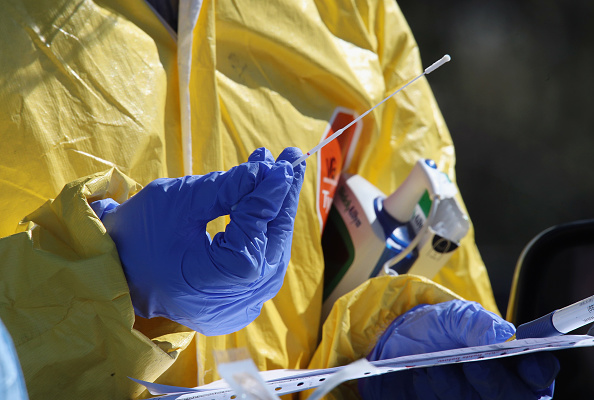As the Covid-19 pandemic continues to grow in the US and around the world, hundreds of diagnostic companies, ranging from large to small, have turned their focus to develop new assays to rapidly expand testing and provide quick results.
In an unprecedented decision, the FDA is allowing tests under review to be sold and used to help increase the number of assays on the market. Still, two bottlenecks continue to slow down testing: a shortage of swabs, and specimen transport.
Bottleneck issue #1: Shortage of Swabs
All of the early tests, and most of the current tests were molecular tests, and the ideal sample was determined to be a swab taken from the back of the nose that needed to get to the lab without the key component of the sample, the RNA, degrading. A healthcare worker would swab a patient’s nose and put the swab into a special tube called transport media.
The two largest suppliers of FDA-approved swabs and transport media include two private companies based in Maine and Northern Italy. Prior to Covid-19 outbreak, both suppliers had produced enough stock for a typical cold and flu season along with extras for expected annual demand. Much of the supplies were used up by the end of January for standard seasonal infections. All additional stock from the Italian company were kept in Italy and exported to China and South Korea for Covid-19 testing.
The US government put restrictions on the US supplier to ensure that key labs were receiving appropriate materials to create testing equipment. Swabs and sample transport tubes quickly became a major bottleneck.
Bottleneck issue #2: Specimen Transport
The second bottleneck that emerged is related to specimen transport. Supplies of viral transport media (VTM) in the United States were already depleted by an early influenza season. Additional stockpiles were directed to China to facilitate testing. The main supplier of VTM, also the largest maker of nasal swabs in the world, was located in Northern Italy, challenging their ability to increase production for the US market. Their counterpart in the United States, Puritan Scientific, is a family-owned company in which prides itself on its small-town manufacturing base.

The Funding Model for Cancer Innovation is Broken — We Can Fix It
Closing cancer health equity gaps require medical breakthroughs made possible by new funding approaches.
The VTM that was available created a second challenge. Samples coming into the laboratories in standard transport media are considered highly infectious. By CDC guidelines, each sample must be inactivated in a special Biological Containment Cabinet, even for point of care testing. This challenge slows down the processing at the lab or hospital.
Samples must be kept refrigerated or frozen while they wait to be inactivated to prevent the degradation of the RNA. This problem was identified in Wuhan in the early days of Covid-19 testing when labs were getting a significant number of negative results from patients that had clear clinical symptoms.
As we saw in Wuhan during the ?rst month of the outbreak, there is a bottleneck in many laboratories that are not equipped to handle samples of Covid-19. Delays in testing cause samples to degrade and high-quality assays to generate false-negative results, leading to further virus spread and waste of resources.
To address the sample collection challenges, the US Food and Drug Administration (FDA) added information to its Frequently Asked Questions (FAQ) about SARS-CoV-2 testing document under primary sample collection devices for molecular testing.
Government action: Validate new technologies, Increase Production and then Stockpile
As the Covid-19 virus took hold in New York, the New York Health Department moved quickly to validate new transport media and swabs with their approved test. The New York Department of Homeland Security moved swiftly and aggressively to place orders, acting and communicating as partners with suppliers and distributors. Other states and laboratories quickly followed.
The FDA and FEMA are working closely with diagnostic and lab supply companies to rapidly scale up the production of swabs and sample transport media. For some companies, production is doubling every week causing new bottlenecks around individual components. The federal government is actively engaging in all levels of the supply chain down to the ingredients, tubes, and manufacturing equipment. Their initial focus has been to push out as much supply to the states that have the most severe outbreaks while building the capacity to meet an unprecedented amount of testing. Additional capacity will allow large employers and at-home testing companies to expand testing. Once supply exceeds daily demand which could be achieved for some products as early as mid-May, stockpiling will begin in preparation for a surge in infections, or the next viral respiratory infection season.
Conclusion
In the last six weeks, government officials and the diagnostic industry have had to adapt to new ways of thinking and new procedures. Both groups have been forced to expand their thinking on new technologies, new supply chains, and new decision-making algorithms. The new operating procedures that are being put into place, as well as the additional capacity that is being utilized across the testing spectrum, will serve us well during the remainder of this crisis and future emergencies.
Moving forward pandemic preparedness funding needs to be focused on developing technologies that can be quickly adapted to the new pathogen, and scaled rapidly, ensuring stockpile and manufacturing capacity for key items such as swabs and sample transport media, and laboratory preparedness to shift rapidly to focused testing.
Photo Credit: Bruce Bennett, Getty Images
###
Jeff Fischer, MBA, President, Longhorn Vaccines and Diagnostics, is responsible for oversight of all non-scientific aspects of the organization to include regulatory affairs. Mr. Fischer co-founded the company and has served as its Chief Financial Officer from 2007-2017. From 1998-2005, Mr. Fischer served as an executive vice president and CFO in the biotechnology industry. He is a former infantry officer in the United States Marine Corps and holds an MBA from the University of Texas at Austin.
This post appears through the MedCity Influencers program. Anyone can publish their perspective on business and innovation in healthcare on MedCity News through MedCity Influencers. Click here to find out how.











